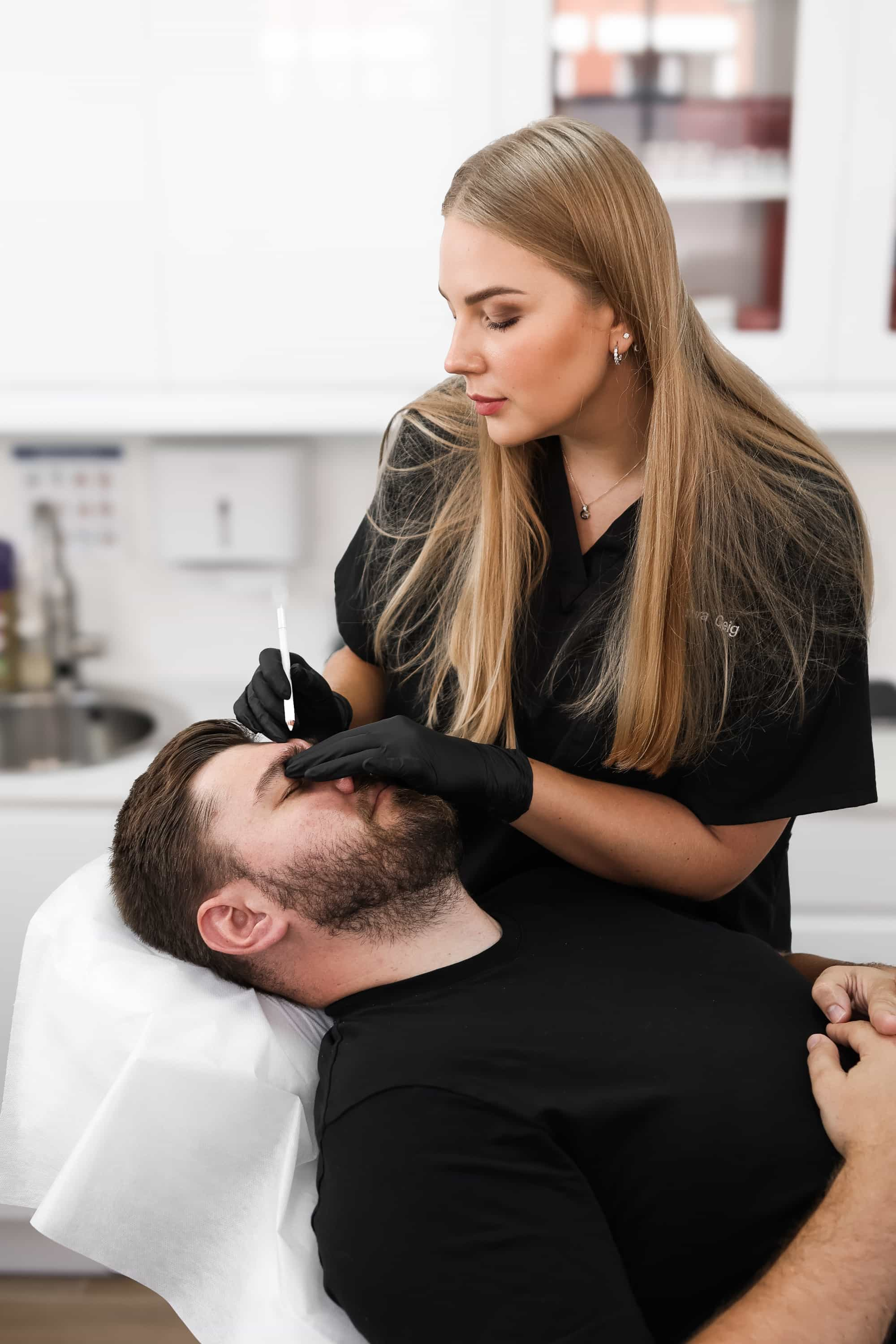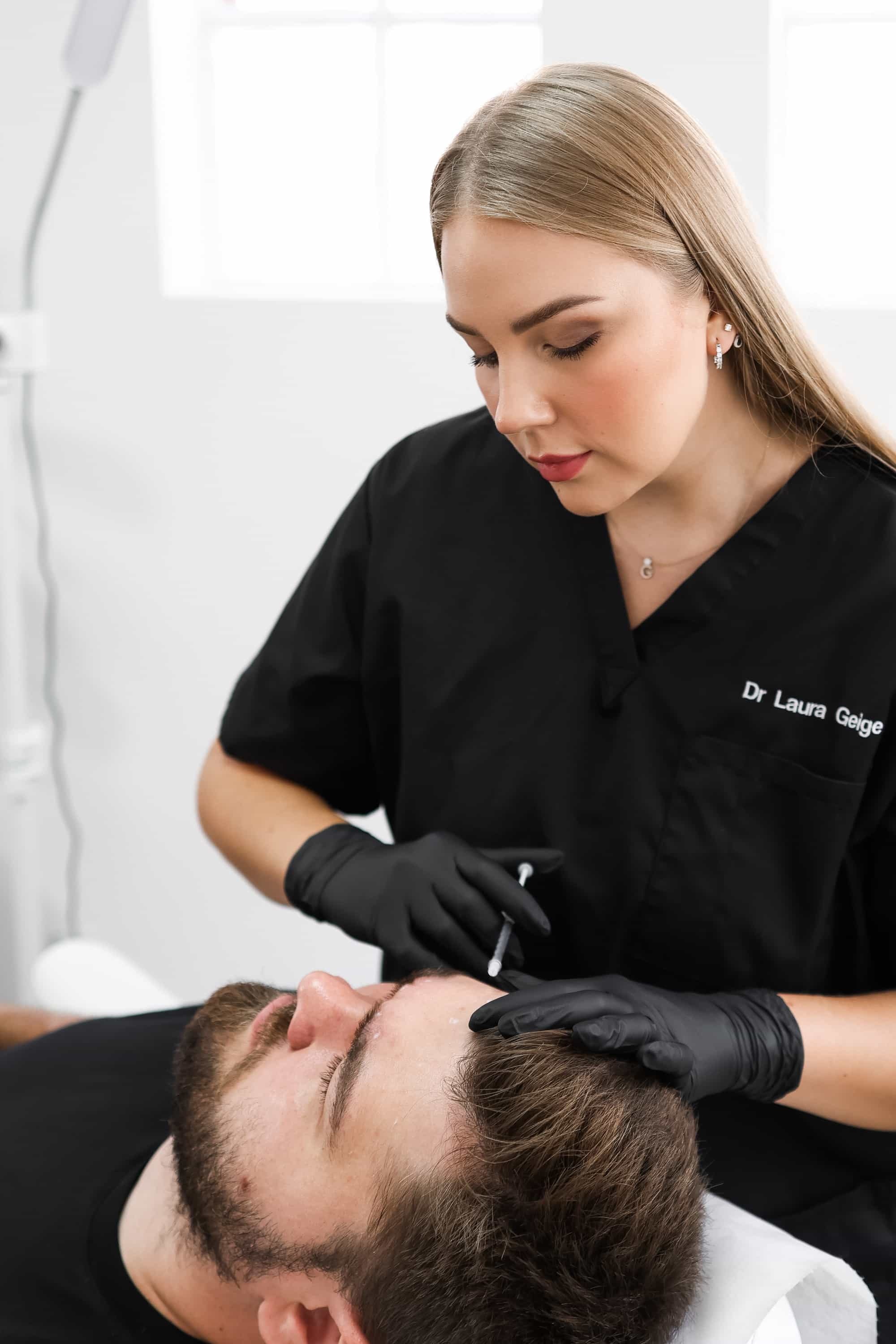Safety of Bunny Lines Treatment
Bunny lines, those tiny wrinkles that appear around the nose and between the eyebrows, can be a source of concern for many individuals. Treatments like dermal fillers offer a potential solution to smooth these lines and restore a more youthful appearance. However, it’s crucial to understand the safety aspects of any aesthetic procedure, particularly in the context of Bunny Lines treatment. This article delves into the safety profile of Bunny Lines treatment in the UK, examining factors such as licensed practitioners, potential side effects, and long-term considerations.
Approved Procedures and Clinics
Bunny lines treatment, using dermal fillers, is generally safe when performed by a qualified and experienced practitioner in a reputable clinic. The UK has strict regulations governing aesthetic procedures, requiring practitioners to be registered with appropriate bodies such as the General Medical Council (GMC) for doctors or the Nursing and Midwifery Council (NMC) for nurses.
Potential side effects of Bunny lines treatment are usually mild and temporary, including redness, swelling, bruising, and tenderness around the injection site. These typically subside within a few days to a week. More serious side effects, such as infection or allergic reactions, are rare but can occur. It’s essential to choose a clinic that adheres to strict hygiene protocols and uses sterile equipment.
Long-term considerations include the temporary nature of dermal fillers. Results typically last for 6 to 18 months, after which top-up treatments may be required to maintain the desired effect. Repeated treatments can lead to gradual tissue changes, so it’s important to discuss long-term goals and potential risks with your practitioner.
When seeking Bunny lines treatment in the UK, research and choose a reputable clinic with qualified practitioners who are transparent about their experience and qualifications. Always ask for before-and-after photos of previous patients and inquire about the types of fillers used and the procedure’s potential risks and benefits.
Qualifications of Practitioners
Bunny lines treatment, using dermal fillers, is generally safe when performed by a qualified and experienced practitioner in a reputable clinic. The UK has strict regulations governing aesthetic procedures, requiring practitioners to be registered with appropriate bodies such as the General Medical Council (GMC) for doctors or the Nursing and Midwifery Council (NMC) for nurses.
Potential side effects of Bunny lines treatment are usually mild and temporary, including redness, swelling, bruising, and tenderness around the injection site. These typically subside within a few days to a week. More serious side effects, such as infection or allergic reactions, are rare but can occur. It’s essential to choose a clinic that adheres to strict hygiene protocols and uses sterile equipment.
Long-term considerations include the temporary nature of dermal fillers. Results typically last for 6 to 18 months, after which top-up treatments may be required to maintain the desired effect. Repeated treatments can lead to gradual tissue changes, so it’s important to discuss long-term goals and potential risks with your practitioner.
When seeking Bunny lines treatment, research and choose a reputable clinic with qualified practitioners who are transparent about their experience and qualifications. Always ask for before-and-after photos of previous patients and inquire about the types of fillers used and the procedure’s potential risks and benefits.
Potential Side Effects
Bunny lines treatment, using dermal fillers, is generally safe when performed by a qualified and experienced practitioner in a reputable clinic. The UK has strict regulations governing aesthetic procedures, requiring practitioners to be registered with appropriate bodies such as the General Medical Council (GMC) for doctors or the Nursing and Midwifery Council (NMC) for nurses.
Potential side effects of Bunny lines treatment are usually mild and temporary, including redness, swelling, bruising, and tenderness around the injection site. These typically subside within a few days to a week. More serious side effects, such as infection or allergic reactions, are rare but can occur. It’s essential to choose a clinic that adheres to strict hygiene protocols and uses sterile equipment.
Long-term considerations include the temporary nature of dermal fillers. Results typically last for 6 to 18 months, after which top-up treatments may be required to maintain the desired effect. Repeated treatments can lead to gradual tissue changes, so it’s important to discuss long-term goals and potential risks with your practitioner.
Risk Factors
Bunny lines treatment is generally safe when performed by a qualified professional in a reputable clinic. The UK has strict regulations governing aesthetic procedures, ensuring practitioners are registered with bodies like the General Medical Council (GMC) or the Nursing and Midwifery Council (NMC).

Potential side effects are usually mild and temporary, including redness, swelling, bruising, and tenderness around the injection site. These typically subside within a few days to a week. Rare but possible serious side effects include infection or allergic reactions. It’s crucial to choose a clinic with stringent hygiene protocols and sterile equipment.
Remember that dermal fillers are temporary, with results lasting 6 to 18 months. Top-up treatments may be needed to maintain the desired effect. Repeated treatments can lead to gradual tissue changes, so discuss long-term goals and potential risks with your practitioner.

Complications
Bunny lines treatment, using dermal fillers, is generally safe when performed by a qualified and experienced practitioner in a reputable clinic. The UK has strict regulations governing aesthetic procedures, requiring practitioners to be registered with appropriate bodies such as the General Medical Council (GMC) for doctors or the Nursing and Midwifery Council (NMC) for nurses.
Potential side effects of Bunny lines treatment are usually mild and temporary, including:

- Redness
- Swelling
- Bruising
- Tenderness around the injection site.
These typically subside within a few days to a week. More serious side effects, such as infection or allergic reactions, are rare but can occur. It’s essential to choose a clinic that adheres to strict hygiene protocols and uses sterile equipment.
Long-term considerations include the temporary nature of dermal fillers. Results typically last for 6 to 18 months, after which top-up treatments may be required to maintain the desired effect. Repeated treatments can lead to gradual tissue changes, so it’s important to discuss long-term goals and potential risks with your practitioner.
When seeking Bunny lines treatment in the UK, research and choose a reputable clinic with qualified practitioners who are transparent about their experience and qualifications. Always ask for before-and-after photos of previous patients and inquire about the types of fillers used and the procedure’s potential risks and benefits.
Recovery Process
Bunny lines treatment, using dermal fillers, is generally safe when performed by a qualified and experienced practitioner in a reputable clinic. The UK has strict regulations governing aesthetic procedures, requiring practitioners to be registered with appropriate bodies such as the General Medical Council (GMC) for doctors or the Nursing and Midwifery Council (NMC) for nurses.
Potential side effects of Bunny lines treatment are usually mild and temporary, including redness, swelling, bruising, and tenderness around the injection site. These typically subside within a few days to a week. More serious side effects, such as infection or allergic reactions, are rare but can occur. It’s essential to choose a clinic that adheres to strict hygiene protocols and uses sterile equipment.
Long-term considerations include the temporary nature of dermal fillers. Results typically last for 6 to 18 months, after which top-up treatments may be required to maintain the desired effect. Repeated treatments can lead to gradual tissue changes, so it’s important to discuss long-term goals and potential risks with your practitioner.
When seeking Bunny lines treatment in the UK, research and choose a reputable clinic with qualified practitioners who are transparent about their experience and qualifications. Always ask for before-and-after photos of previous patients and inquire about the types of fillers used and the procedure’s potential risks and benefits.
Long-Term Effects
Bunny lines treatment, using dermal fillers, is generally safe when performed by a qualified and experienced practitioner in a reputable clinic. The UK has strict regulations governing aesthetic procedures, requiring practitioners to be registered with appropriate bodies such as the General Medical Council (GMC) for doctors or the Nursing and Midwifery Council (NMC) for nurses.
Potential side effects of Bunny lines treatment are usually mild and temporary, including redness, swelling, bruising, and tenderness around the injection site. These typically subside within a few days to a week. More serious side effects, such as infection or allergic reactions, are rare but can occur. It’s essential to choose a clinic that adheres to strict hygiene protocols and uses sterile equipment.
Long-term considerations include the temporary nature of dermal fillers. Results typically last for 6 to 18 months, after which top-up treatments may be required to maintain the desired effect. Repeated treatments can lead to gradual tissue changes, so it’s important to discuss long-term goals and potential risks with your practitioner.
When seeking Bunny lines treatment in the UK, research and choose a reputable clinic with qualified practitioners who are transparent about their experience and qualifications. Always ask for before-and-after photos of previous patients and inquire about the types of fillers used and the procedure’s potential risks and benefits.
Alternatives to Bunny Lines Treatment
While dermal fillers offer a popular solution to minimize bunny lines, exploring alternative treatment options may be beneficial. Options like Botox injections can target specific muscles responsible for wrinkle formation, while topical creams containing retinol or hyaluronic acid can help improve skin texture and hydration, potentially reducing the appearance of fine lines.
Non-Invasive Options
While dermal fillers offer a popular solution to minimize bunny lines, exploring alternative treatment options may be beneficial. Options like Botox injections can target specific muscles responsible for wrinkle formation, while topical creams containing retinol or hyaluronic acid can help improve skin texture and hydration, potentially reducing the appearance of fine lines.
- Botox Injections: Botox works by temporarily paralyzing the muscles responsible for creating bunny lines. This can smooth out the wrinkles and prevent their formation.
- Topical Creams: Retinol and hyaluronic acid are common ingredients in skincare products that can help reduce the appearance of fine lines and wrinkles. Retinol promotes collagen production, while hyaluronic acid hydrates the skin and plumps up its appearance.
These non-invasive options offer less downtime and fewer potential risks compared to filler injections, making them suitable alternatives for individuals seeking a milder approach to addressing bunny lines.
Alternative Treatments
While dermal fillers are a common treatment for bunny lines, there are alternative options worth considering.
One alternative is Botox injections. Botox works by temporarily paralyzing the muscles that contribute to wrinkle formation, including those responsible for bunny lines. This can help smooth out the appearance of existing wrinkles and prevent new ones from developing.
Topical creams containing ingredients like retinol and hyaluronic acid can also be effective in reducing the appearance of bunny lines. Retinol stimulates collagen production, which helps improve skin firmness and reduce wrinkles, while hyaluronic acid hydrates the skin and plumps it up, minimizing the look of fine lines.
These alternatives offer less downtime and generally carry fewer risks compared to dermal fillers, making them suitable options for individuals seeking a less invasive approach to addressing bunny lines.
Book a consultation for Bunny Lines Treatment at It’s Me & You Clinic with Dr. Laura Geige.
- Who Shouldn’t Get Tear Trough Filler? - November 19, 2025
- What Is Sexual Liberation And How It Influences The Modern Dating Scene - November 18, 2025
- Weed Infused Drinks That Belong At Your Next BBQ - November 15, 2025
